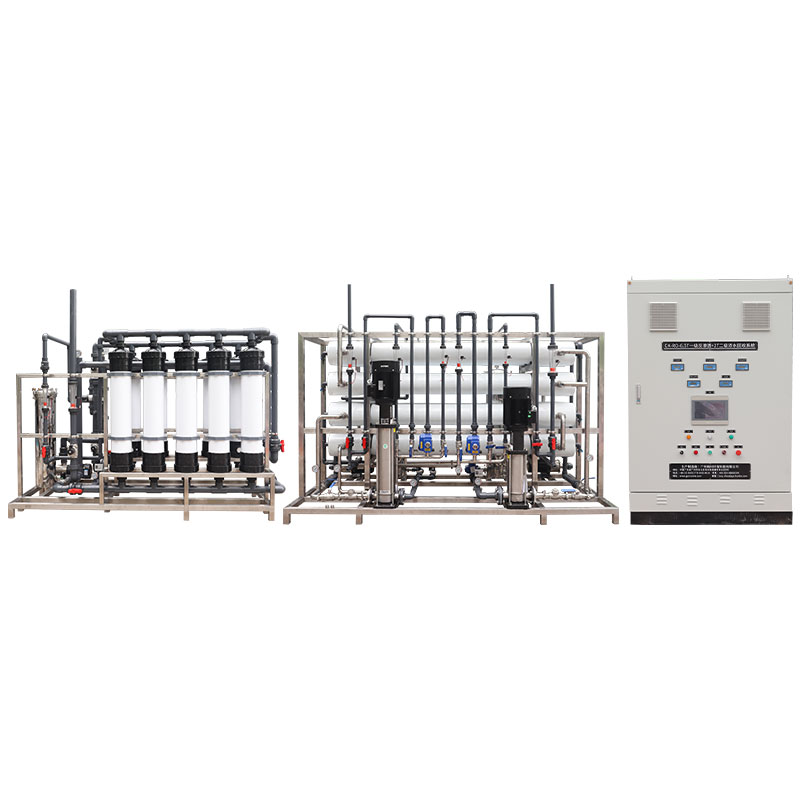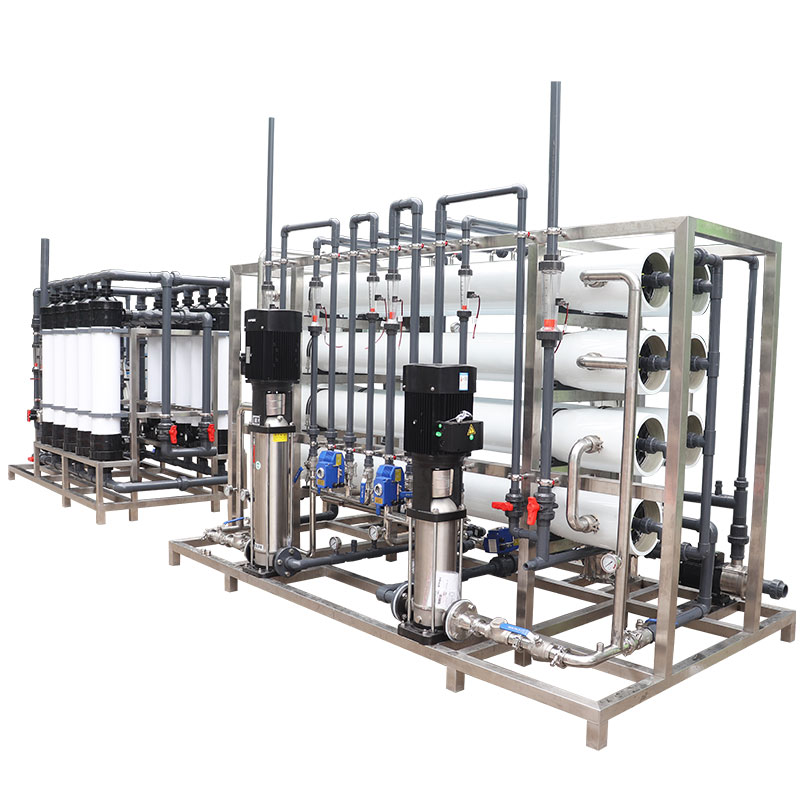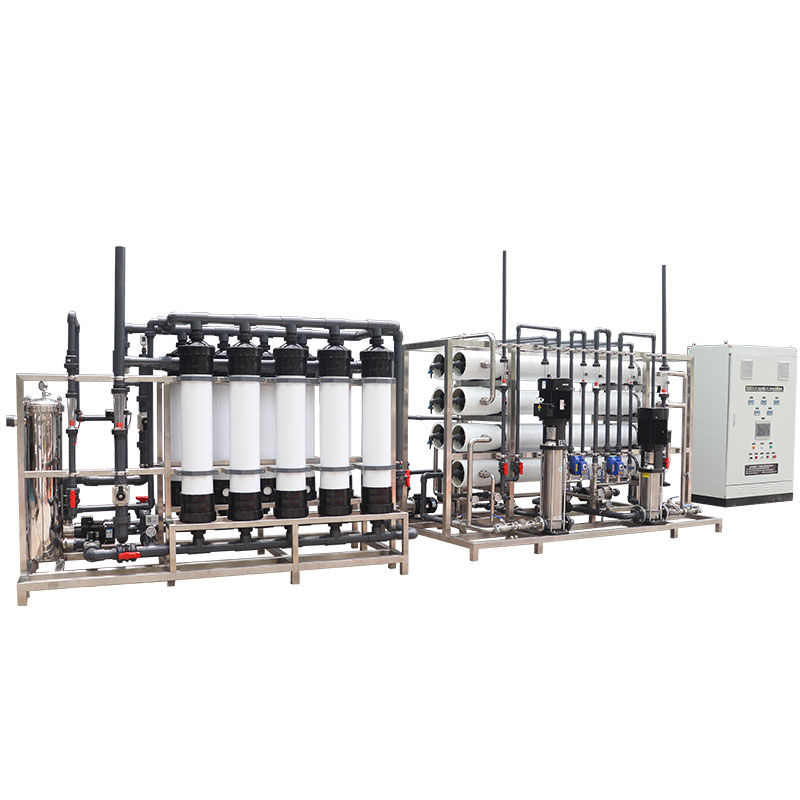Can RO water filtration system be used for agricultural irrigation?
In recent years, the problem of water shortage has become increasingly serious, especially in arid and semi-arid areas, and the supply pressure of agricultural irrigation water has increased. In order to solve this problem, scientists and engineers are constantly exploring new ways to use water resources. Among them, reverse osmosis water filtration system, as a highly efficient water treatment technology, is widely used in drinking water purification and industrial water treatment.
So, can reverse osmosis water filtration system be used for agricultural irrigation? This is a question that has attracted much attention.

Working principle of reverse osmosis water filtration system
Reverse osmosis (RO) is a water treatment technology that removes impurities such as dissolved salts, microorganisms, bacteria and organic matter from water through a semipermeable membrane to obtain pure water. The basic principle is to use pressure to make water pass through the reverse osmosis membrane, while dissolved salts and other impurities are retained on the other side of the membrane. The pore size of the reverse osmosis membrane is very small, usually only about 0.0001 microns, which enables it to effectively remove almost all dissolved salts and other impurities.
Potential of Reverse Osmosis Water Filtration System in Agricultural Irrigation
Reverse osmosis technology has several potential advantages in agricultural irrigation:
1. Water quality improvement: The water quality treated by the reverse osmosis system is greatly improved, and it contains almost no dissolved salts and harmful substances, which is especially important for crops that require high-quality water sources. For example, some fruits and vegetables have very high requirements for water quality, and the use of high-quality irrigation water can significantly improve crop yield and quality.
2. Soil protection: Long-term use of high-salinity water sources for irrigation will lead to soil salinization and affect crop growth. The reverse osmosis water filtration system can provide low-salinity water to avoid soil salinization, thereby protecting the sustainability of agricultural land.
3. Resource optimization: The reverse osmosis system can treat many types of water sources, including groundwater, surface water and wastewater, which makes it have a wide range of application potential in areas with scarce water resources. By treating wastewater for irrigation, it can not only save water resources, but also reduce dependence on natural water sources.

Practical application cases
Although reverse osmosis technology has many advantages in theory, it also faces some challenges and limitations in practical applications. The following are some actual cases of reverse osmosis water filtration systems used for agricultural irrigation and their effect analysis.
Case 1: Desert Agriculture in Israel
Israel is one of the countries with the most scarce water resources in the world, but the country is a world leader in agricultural irrigation technology. In Israel's desert areas, reverse osmosis water filtration systems are widely used to treat seawater and salt water to provide high-quality irrigation water. In this way, Israel not only solves the problem of water shortage, but also significantly improves agricultural output and economic benefits.
Case 2: Vineyards in California, USA
California is an important agricultural production area in the United States, but the region also faces serious water shortage problems. In order to ensure the irrigation water source of the vineyard, some farmers use reverse osmosis systems to treat groundwater and recycled water. The results show that after using the reverse osmosis water filtration system, the yield and quality of grapes have been significantly improved, and the problem of soil salinization has also been reduced.

Challenges and Solutions
Although the reverse osmosis water filtration system has demonstrated many advantages in agricultural irrigation, its high cost and energy consumption also limit its widespread application. The following are some strategies to deal with these challenges:
1. Cost control: The initial investment and maintenance costs of the reverse osmosis system are high, so cost control measures need to be considered when promoting and applying it. For example, equipment and operating costs can be reduced through large-scale application and technological improvements.
2. Energy efficiency: The energy consumption of the reverse osmosis system is large, so improving energy efficiency is the key. Renewable energy such as solar energy can be used as the power source of the reverse osmosis system to reduce dependence on traditional energy.
3. Comprehensive utilization: Combined with other water treatment technologies, such as ultraviolet disinfection and nanofiltration, water treatment efficiency and water quality can be improved while reducing operating costs.
Future Outlook
With the continuous advancement of technology and the gradual reduction of costs, the application prospects of reverse osmosis water filtration systems in agricultural irrigation are broad. In the future, as the demand for water resources continues to increase, reverse osmosis technology will become one of the important means to solve the problem of water shortage.
In addition, the government and scientific research institutions can promote the promotion and application of reverse osmosis technology in agriculture through policy support and scientific research investment. For example, farmers and agricultural enterprises can be encouraged to adopt reverse osmosis water filtration systems to improve the efficiency and quality of agricultural water use by providing financial subsidies, technical training and demonstration projects.






